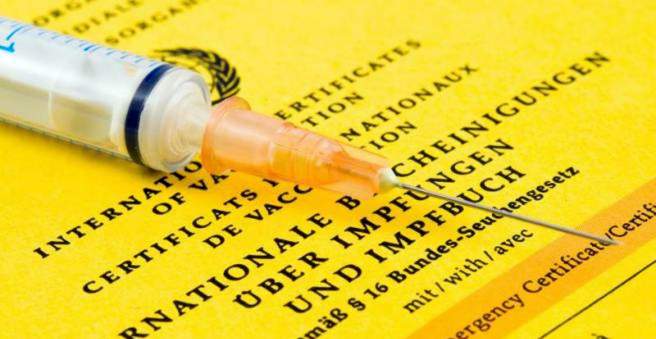Subsequent rabies vaccination is the only way to survive in case of infection. For this, the vaccination must be carried out as soon as possible after the bite of an animal suffering from rabies. Those traveling in regions with a high risk of rabies should possibly be vaccinated against rabies as a precautionary measure.

Forms of rabies vaccination
Rabies is caused by an infection with the Lyssa virus. Most of the pathogen is transmitted through the bite of an infected animal (dog, fox, vampire bat, etc.) to humans. When the disease breaks out, it always ends in death.
A safe vaccination against rabies provides a vaccine. Rabies vaccines can help both preventively and in acute cases. As part of the prophylactic vaccination, the body builds up a long-term vaccine protection over the course of a few weeks. Subsequent vaccination will be given in case of suspected rabies infection.
Preventive rabies vaccine
Rabies vaccine prophylaxis is especially important for people who often come into contact with animals. For example, veterinarians and foresters should be vaccinated against rabies. But also for tourists who travel to countries where rabies is widespread, a preventive (prophylactic) rabies vaccination is recommended.
It contains attenuated rabies pathogens and causes the body to build a safe self-protection. This requires a total of three vaccinations – the second is after seven days, the third one 21 days after the first injection. About 14 days after the last injection, a good vaccine protection has built up. Those who are permanently at risk of infection must refresh the vaccine regularly.
The vaccine protection provided by the rabies prophylactic vaccine is very reliable. Time intervals to other vaccinations do not have to comply.
In persons with a particularly high risk of infection – for example, laboratory personnel – or if the vaccinee has an immunodeficiency, the success of the vaccine can be checked by means of an antibody test.
Subsequent rabies vaccination
Even unvaccinated people who become infected, a subsequent rabies vaccination (post-exposure immunization) save lives. The prerequisite is that it takes place soon after contact with the sick animal – preferably within hours. The sooner the subsequent vaccination takes place, the greater the chances of survival of the patient.
The first action after the bite of a rabies animal is the immediate thorough rinsing and disinfection of the wound. This way, some of the pathogens can already be made harmless. Following this, a doctor must be consulted as soon as possible.
For passive immunization, the doctor injects first highly concentrated human antibodies against the rabies virus (rabies hyperimmune globulin) directly into the entry point of the pathogen – for example, in and around the bite wound. They fight the rabies virus without delay.
At the same time, the body is stimulated with a cell culture vaccine to even act against the pathogen (active immunization). Subsequent rabies vaccination consists of up to six individual vaccinations on days 0, 3, 7, 14, 30 and 90. Keeping these distances is very important in case of a possible infection.
Rabies vaccination – Side effects
The rabies vaccine is usually well tolerated. Possible are slight reactions at the injection site and mild general reactions such as fatigue, gastrointestinal complaints or an increase in body temperature.
Avoid rabies infection
In order to avoid a rabies infection, you should always refrain from contact with seemingly tame animals. In the tropics and subtropics, every animal is considered rabies – especially stray dogs. Even wild animals that appear conspicuous trustful, you should not touch. Contact with the saliva of a sick animal is sufficient for an infection – for example, if it gets into a wound or on mucous membranes. Especially with a scratch or bite injury, you must see a doctor immediately.
Make your children aware of rabies. Explain to them that they should keep their distance from wild animals and never touch dead animals. If it does happen anyway, you should get one as soon as possible Rabies vaccination be administered.